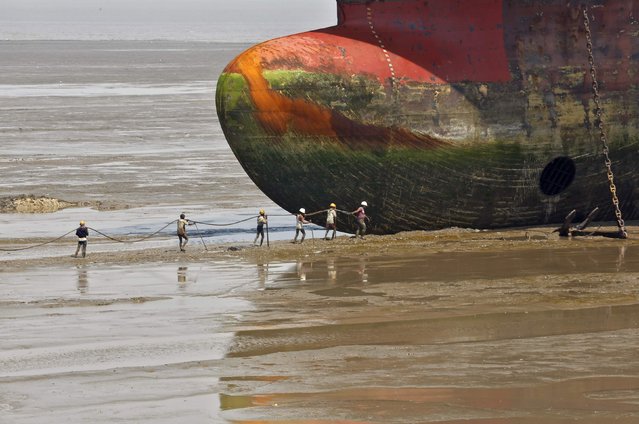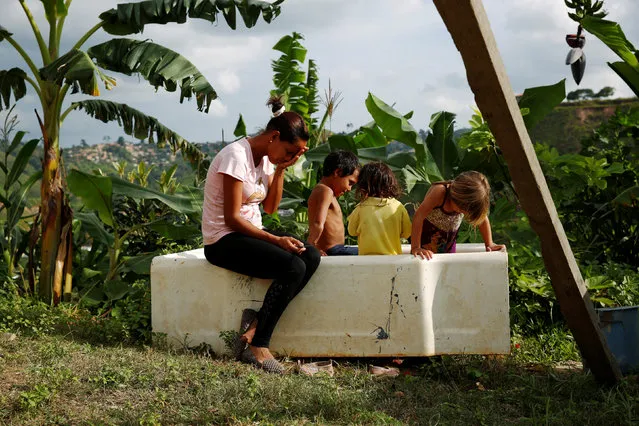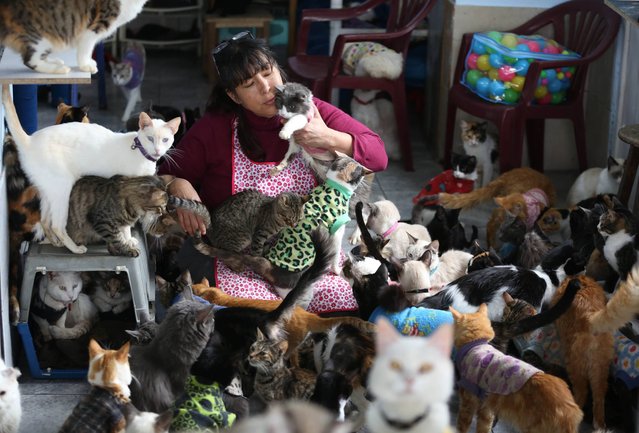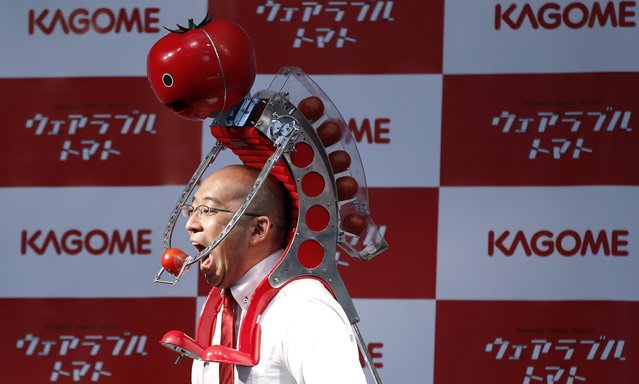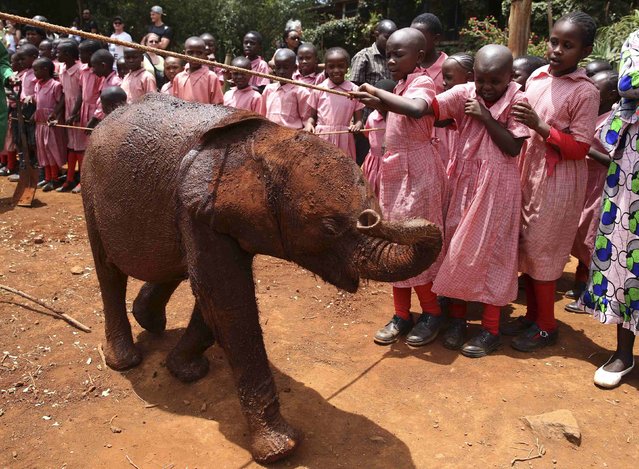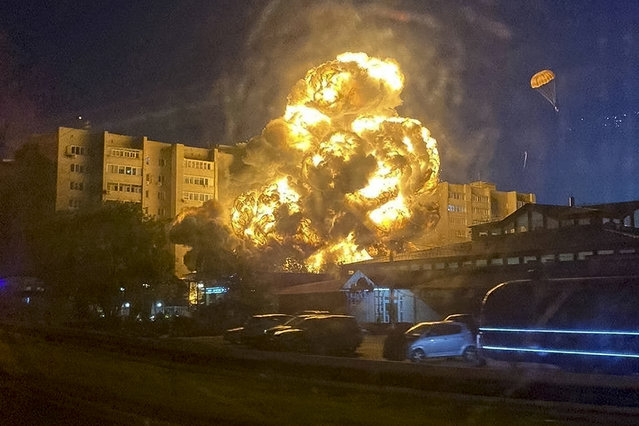
In this handout photo released by Kooperativ Telegram Channel, flames and smoke rise from the scene after a warplane crashed into a residential area in Yeysk, Russia, Monday, October 17, 2022. The Russian military says one of its warplanes has crashed near an apartment building in Yeysk, a port city on the Sea of Azov, after experiencing engine failure on takeoff. The crash ignited a huge fire, killing at least four people, leaving six missing and injuring 21 others, eight of whom were in grave condition. One of the pilots, right, descends on a parachute. (Photo by Kooperativ Telegram Channel via AP Photo)
26 Oct 2022 05:22:00,post received
0 comments

